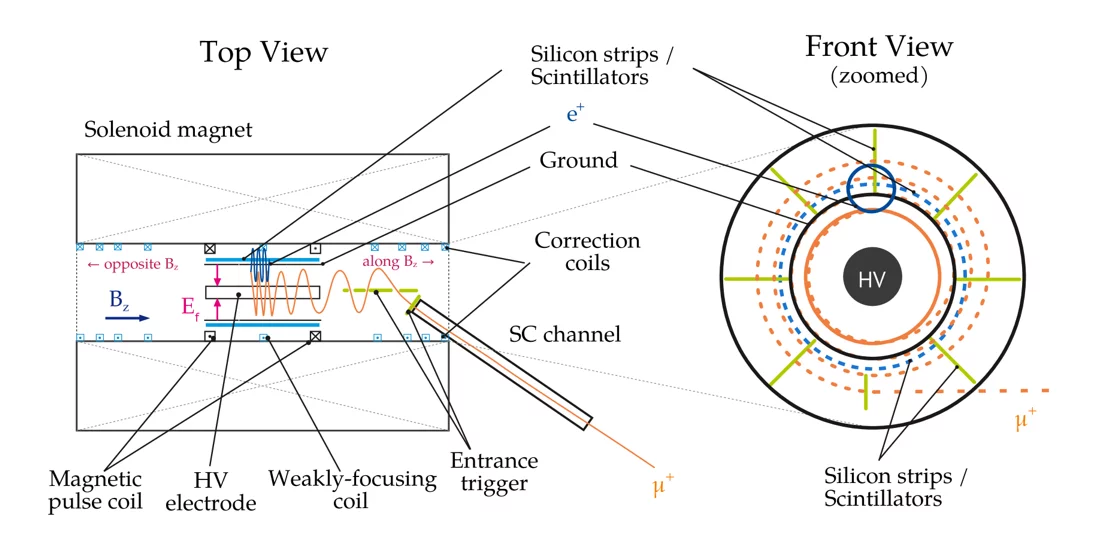In the paper, the international muEDM collaboration at PSI discusses systematic effects of the most sensitive measurement of the muon's electric dipole moment (EDM). Scientists from Europe are developing a prototype experiment using the frozen-spin technique (FST) to achieve unprecedented sensitivity. The FST meticulously aligns a magnetic field with a perpendicular electric field so that the muon's spin orientation always follows its momentum. This enhances the sensitivity to the muon EDM by about 3 orders of magnitude compared to the best result from the muon g-2 experiment at Brookhaven National Lab.
The paper addresses systematic effects that could mimic an EDM signal when E- and B-fields are not perfectly aligned, adjusted, or stable over time. While most effects cancel out when reversing the magnetic field, some residual effects the specifications for the fields' uniformity, stability, and orientation,
which are challenging but achievable.
At the Paul Scherrer Institut (PSI), we are currently working on the development of a high-precision apparatus with the aim of searching for the muon electric dipole moment (EDM) with unprecedented sensitivity. The underpinning principle of this experiment is the frozen-spin technique, a method that suppresses the spin precession due to the anomalous magnetic moment, thereby enhancing the signal-to-noise ratio for EDM signals. This increased sensitivity facilitates measurements that would be difficult to achieve with conventional g−2 muon storage rings. Given the availability of the p=125 MeV/c muon beam at PSI, the anticipated statistical sensitivity for the EDM after a year of data collection is 6×10−23e⋅cm. To achieve this goal, it is imperative to meticulously analyse and mitigate any potential spurious effects that could mimic EDM signals. In this study, we present a quantitative methodology to evaluate the systematic effects that might arise in the context of employing the frozen-spin technique within a compact storage ring. Our approach entails the analytical derivation of equations governing the motion of the muon spin in the electromagnetic (EM) fields intrinsic to the experimental setup, validated through subsequent numerical simulations. We also illustrate a method to calculate the cumulative geometric (Berry's) phase. This work complements ongoing experimental efforts to detect a muon EDM at PSI and contributes to a broader understanding of spin-precession systematic effects.
Contact
Dr. Chavdar Dutsov
Paul Scherrer Institut
Forschungsstrasse 111
5232 Villigen PSI
+41 56 310 29 41
chavdar.dutsov@psi.ch

